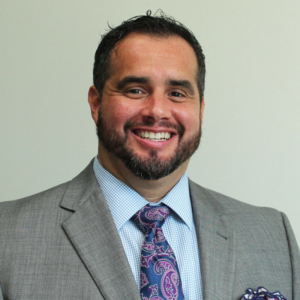
New GAO report shows most schools misrepresent how much school will actually cost in their financial aid offers.
Last month, the U.S. Government Accountability Office (GAO) published a report finding that 91% of U.S. colleges essentially misrepresent the cost of attendance by understating or not including net price in their financial aid offers.
This makes it hard for students to compare schools and make informed financial decisions, and it can lead students to eventually take on more debt than they planned.
The report, “Financial Aid Offers: Action Needed to Improve Information on College Costs and Student Aid,” found two thirds of a nationally representative sample of colleges and universities were not following best practices for providing clear and standard financial aid offers:
- Just 9% of schools reviewed by the GAO follow the best practice of estimating net price by subtracting only grants and scholarships that don’t have to be paid back from the the key costs of attending. Key cost of attending includes tuition, living expenses, books, and other required expenses.
- About 41% of colleges do not include net price at all in their financial aid offers to students, leaving it up to students to guess how much they will need to borrow.
- About 50% of colleges understate net price by excluding key costs such as books and living expenses while factoring in loans that must be repaid by the student. This makes the college look like a better financial deal than it actually is.
“The GAO report showing that students are not given the full picture of their financial obligation is, unfortunately, no surprise. This leaves millions of college enrollees annually signing on for loans and terms that they may not fully understand — or fully plan for based on their career track and chosen school,” says Steve Colon, CEO of Bottom Line, in response to the GAO’s findings.
“The impact can be financially catastrophic, given the rising cost of education, housing and the general increase of costs in cities where colleges are located.”
BLACK AND BROWN STUDENTS LIKELY MOST HARMED
Bottom Line is a non-profit working with degree-aspiring students from first-generation, low-income, and under-resourced communities. It partners with students to not only get into college, but to earn a degree and launch a career afterwards.

Steve Colon, CEO Bottom Line
It notes that statistics from The Education Initiative and The Education Trust show that Black college grads leave college with an average of $25,000 more in debt than white students, and nearly half of Black graduates owe 12.5% more than they initially borrowed four years after commencement. Meanwhile, women hold two-thirds of $1.7 trillion in student loan debt in the U.S., with Black women feeling a compounded impact of inequity in job pay and opportunity.
“For Black and brown students who come from the most under-resourced communities, the impact of this lack of disclosure can be even deeper and more financially harmful, likely contributing to above average student loan burden,” Colon says.
As of now, there is no standardized method for reporting financial aid offers to students, so colleges and universities are free to report as they choose. That makes comparing offers and assessing college affordability difficult for students. The GAO suggests congress require colleges to include clear, standardized information in all financial aid offers.
A MATTER OF LAW
According to the GAO report, the Department of Education dispersed $112 billion in financial aid to students through various grant and loan programs in fiscal year 2021. While federal law does require colleges to provide standard financial aid information to certain student veterans, it does not extend to other student groups.
“The lack of financial aid offer requirements could lead other students to make uninformed and costly decisions, such as enrolling in an unaffordable college. Further congressional action would be necessary to ensure that all students receive the information they need in their financial aid offers to make informed education and financial choices,” the GAO states.
The GAO notes that this is a matter for Congressional Consideration, and recommends that the legislative body takes action.
Colon agrees.
“There are solutions. As the GAO says in its report summary, Congress can and should act to make full cost disclosure mandatory at the start of the process,” he says.
“Beyond that, there are solutions we’ve implemented in our programs that help students navigate this system, with successful outcomes.”
For example, Bottom Line partners with degree-aspiring students beginning in high school to provide them with direct advice, counsel and support – through the college selection and financial aid process, course choices and career path trajectory, and more.
“While we believe Congress should act, we also welcome partnership with cities and states to implement our programs in their college systems, to give those students who most need it a chance at success,” Colon says.
You can read the GAO report here.
Learn more about Bottom Line at Bottomline.org.
DON’T MISS: DESPITE EFFORTS TO BRING WORKERS BACK TO THE OFFICE, ONE-THIRD OF PROFESSIONAL JOBS ARE NOW REMOTE AND TAKING EXPERIENTIAL LEARNING TO THE NEXT LEVEL: IU KELLEY STUDENT ATTENDS UN CLIMATE CONFERENCE











Questions about this article? Email us or leave a comment below.